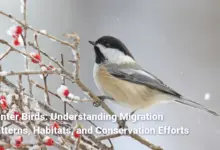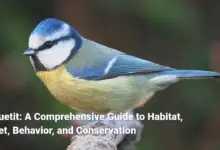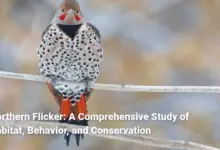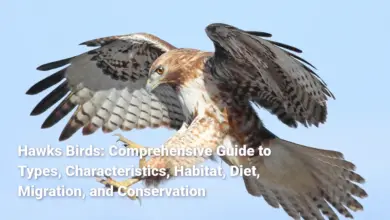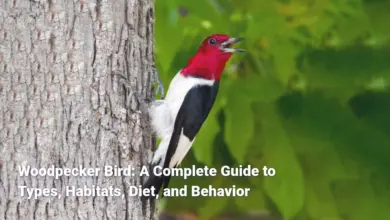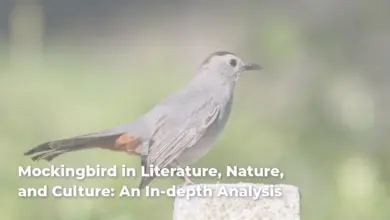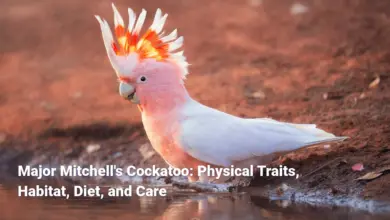American Woodcock: In-Depth Guide to Identification, Habitat, Behavior, Breeding, and Conservation
A Detailed Exploration of the American Woodcock: From Identification and Habitat to Behavior, Breeding, Migration, and Conservation Efforts
The American Woodcock (Scolopax minor) is a fascinating bird species that showcases the richness of avian life in North America. This small shorebird is known for its unique blend of characteristics that make it both visually captivating and ecologically significant. Often found in young forests and shrubby fields, the woodcock displays an endearing appearance and remarkable behaviors that have captured the interest of birdwatchers and nature enthusiasts alike. Its name is derived from its preferred habitat, and it’s colloquially called “timberdoodle” in many regions. This engaging bird weaves its way through the tapestry of North America’s ecosystems, relying on specific conditions to thrive.
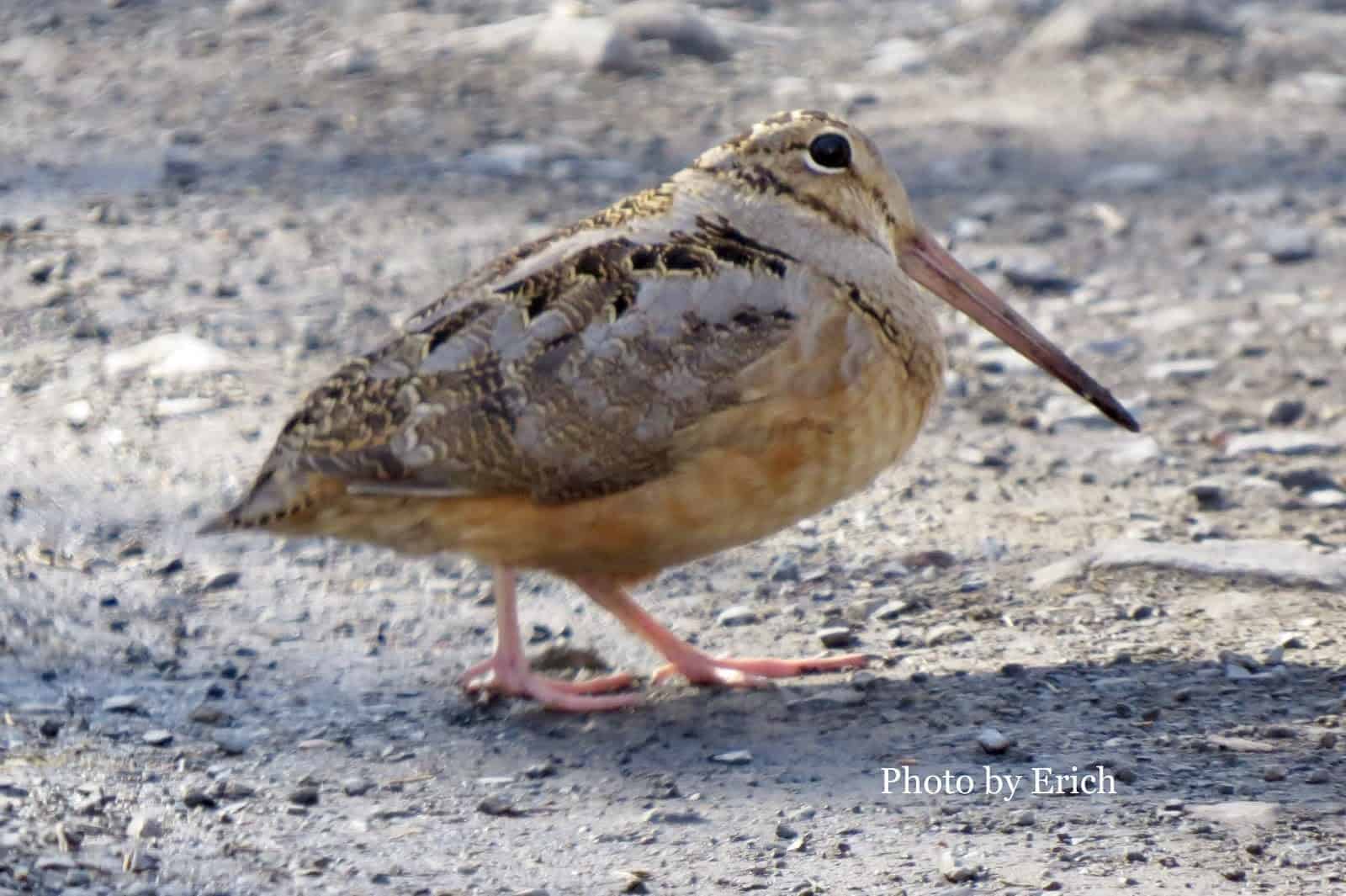
From its distinct features and feeding habits to its complex courtship displays, the American Woodcock offers a glimpse into the intricate balance of nature. This article will explore various aspects of the American Woodcock, including its identification, behavior, breeding practices, and conservation status. The following sections will unfold captivating tales of this elusive bird, featuring relevant details about its habitat preferences, seasonal migrations, and the conservation efforts that aim to protect its populations. Let’s delve into the world of the American Woodcock and unravel the threads that connect it to the rich natural heritage of North America.
Identification
Identifying the American Woodcock can be a rewarding experience, as this shorebird presents a multitude of characteristics that distinguish it from other bird species. Often compared to a small, plump robin in terms of size, the American Woodcock is defined not just by its shape but also by its curious mannerisms. Its stocky frame is supported by short legs and a short neck, creating a figurative “balloon” of a bird that is both comical and endearing. One key identification feature is its remarkably long bill, which can extend up to 4.6 inches, resembling a painter’s brush as it probes the earth for food.
Physical Characteristics Summary:
- Size: Approximately 9.8 to 12.2 inches in length.
- Bill: Up to 4.6 inches long, used for probing.
- Eye Position: Large eyes positioned towards the back of the head for a broad field of vision.
The woodcock’s plumage is another defining feature, showcasing an intricate tapestry of browns, blacks, and buffs, perfect for camouflage amid forest debris. The mottled coloring allows the bird to merge seamlessly with its environment, resembling a walking piece of art rather than a traditional bird. Observing its behavior, such as the unique rocking motion it adopts while searching for food, adds an extra layer to identifying this fascinating creature. Look for the unmistakable “peent” call and aerial displays during courtship, which further mark the presence of this extraordinary bird in suitable habitats.
Physical Characteristics
The physical characteristics of the American Woodcock are as unique as its behavior, creating an endearing portrait of a bird that’s perfectly adapted to its environment. Its stocky, round body is enveloped in a mottled coat of colors that enable it to blend seamlessly into its surroundings. The bird measures approximately 9.8 to 12.2 inches (25 to 31 cm) in length, and its wingspan varies between 16.5 to 18.9 inches (42 to 48 cm), which could allude to its compact bulk rather than mass. Weighing between 4.1 to 9.8 ounces (116 to 279 g), the American Woodcock is relatively light, flying with a slightly awkward grace that resembles its dainty nature.
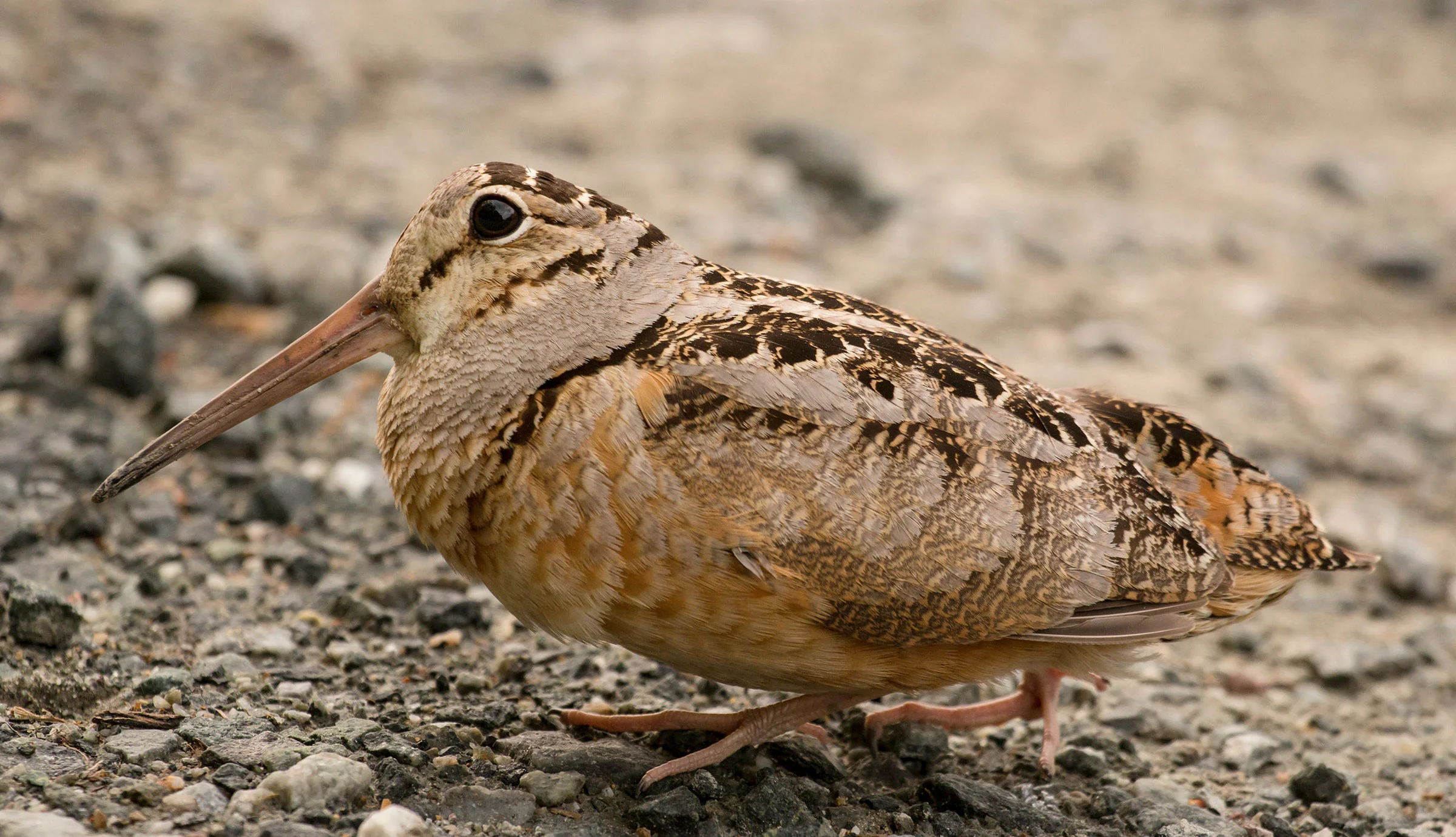
The most visually striking aspect of the woodcock is its long, straight bill. This remarkable feature stretches upward, resembling a tool designed for a unique purpose: probing. It adds an unexpected aesthetic element to the bird, giving it the appearance of being every bit the forager and nature’s excavator. With its exceptionally flexible tip, the bill allows the woodcock to dig into soft soil with the finesse of an artist delicately working with a brush. This ability to navigate the earth is critical for its specialized feeding habits.
Key Physical Characteristics:
| Characteristic | Measurement |
|---|---|
| Length | 9.8 to 12.2 inches |
| Wingspan | 16.5 to 18.9 inches |
| Weight | 4.1 to 9.8 ounces |
| Bill Length | Up to 4.6 inches |
Furthermore, the American Woodcock’s large, expressive eyes, set far back on its head, grant it a wide field of vision. With a horizon of 360 degrees horizontally and 180 degrees vertically, this positioning aids the bird in spotting potential predators while foraging for food. Its physique, amalgamation of dynamic features, and endearing quirks make the American Woodcock an unforgettable subject for birdwatching enthusiasts and casual observers alike.
Size and Shape
The shape and size of the American Woodcock are essential features that contribute to its identification. Endowed with a plump and rounded body structure, the woodcock measures approximately 9.8 to 12.2 inches (25 to 31 cm) in length. Its wingspan, measuring between 16.5 to 18.9 inches (42 to 48 cm), affords it an appearance reminiscent of a small and slightly disheveled balloon drifting in and out of the underbrush. This compact heft adds to its endearing charm and helps it navigate through its preferred habitats.
Its stocky build combines with short legs and a short neck, further emphasizing its unique design. The stout body grants it a robust look, while the extensive length of its straight, prehensile bill measuring 2.5 to 2.8 inches (6.4 to 7.1 cm) makes it standout. This juxtaposition of features lends an almost whimsical quality to its morphology. Observers can watch as the woodcock ambles around during feeding, pressing its bill into the ground, resembling a child playing in the garden.
In terms of observation behaviors, when the American Woodcock forages, it often exhibits a characteristic rocking motion. This quirk only adds to its unique charm, as if it’s performing a dance while searching for food. Therefore, the combination of its round body, elongated bill, and expressive behaviors all come together to make the identification of the American Woodcock an enjoyable experience.
Size Comparison with Similar Species:
| Species | Length | Wingspan |
|---|---|---|
| American Woodcock | 9.8 to 12.2 inches | 16.5 to 18.9 inches |
| Common Snipe | 10.6 to 12.6 inches | 17.7 to 19.7 inches |
| Wilson’s Snipe | 10.2 to 12.6 inches | 17 to 20 inches |
Through careful observations of the woodcock’s unique size and shape, birdwatchers can enhance their ability to appreciate this extraordinary species and its niche in the ecosystem.
Color Patterns
The color patterns of the American Woodcock are a key feature that showcases the bird’s remarkable adaptation to its environment. Cloaked in an intricate tapestry of browns, blacks, buffs, and grays, the woodcock’s plumage is expertly designed for camouflage. This mottling allows the bird to blend seamlessly with the forest floor’s dappled light, effectively hiding from potential predators while it forages for food.
The upper parts of the woodcock are adorned with bold gray stripes and various shades that resemble the patchworks of fallen leaves and branches. These patterns are not merely for aesthetic appeal but serve a functional purpose in ensuring the survival of the bird. The belly of the woodcock presents a buffy-orange hue, contrasting beautifully with the darker shades above, creating a harmonious balance that makes it a visual delight.
Another striking feature worth noting is its distinct gray collar and blackish crown. The face exhibits a soft buffy color, which blends into the neck’s light gray tones. These unique color cues assist in the identification of the bird while also contributing to its exceptional ability to remain concealed among the natural debris of its habitat.
Color Pattern Summary:
| Characteristic | Description |
|---|---|
| Upperparts | Mottled browns and blacks |
| Belly | Buffy-orange |
| Crown | Dark grayish |
| Neck | Light gray |
| Distinctive Markings | Broad gray stripes |
These characteristics make the American Woodcock a master of disguise within its preferred habitats of young forests, shrubby fields, and wetland areas. Observers eager to catch a glimpse of this elusive bird will find their efforts rewarded through carefully attuned eyes that can detect the subtle nuances of its exceptional color patterns.
Habitat
The American Woodcock thrives in a variety of habitats across its range, primarily favoring young forests and shrubby areas that provide essential cover for foraging and nesting. This species is predominantly found in the eastern United States and southeastern Canada, showcasing a preference for environments that deliver rich ecosystems conducive to its lifestyle. The blend of diverse terrains and varying geographic factors ensures that the woodcock thrives as an integral part of these ecosystems.
Young forests, composed mainly of deciduous tree species like quaking aspen, white birch, and maple, serve as prime habitats for the woodcock. These areas not only provide dense cover but also allow for rapid growth and regeneration, which are crucial for the woodcock’s survival. The presence of moist soils in these habitats facilitates access to the bird’s primary food sources earthworms and other invertebrates making it a favorable environment for these unique shorebirds.
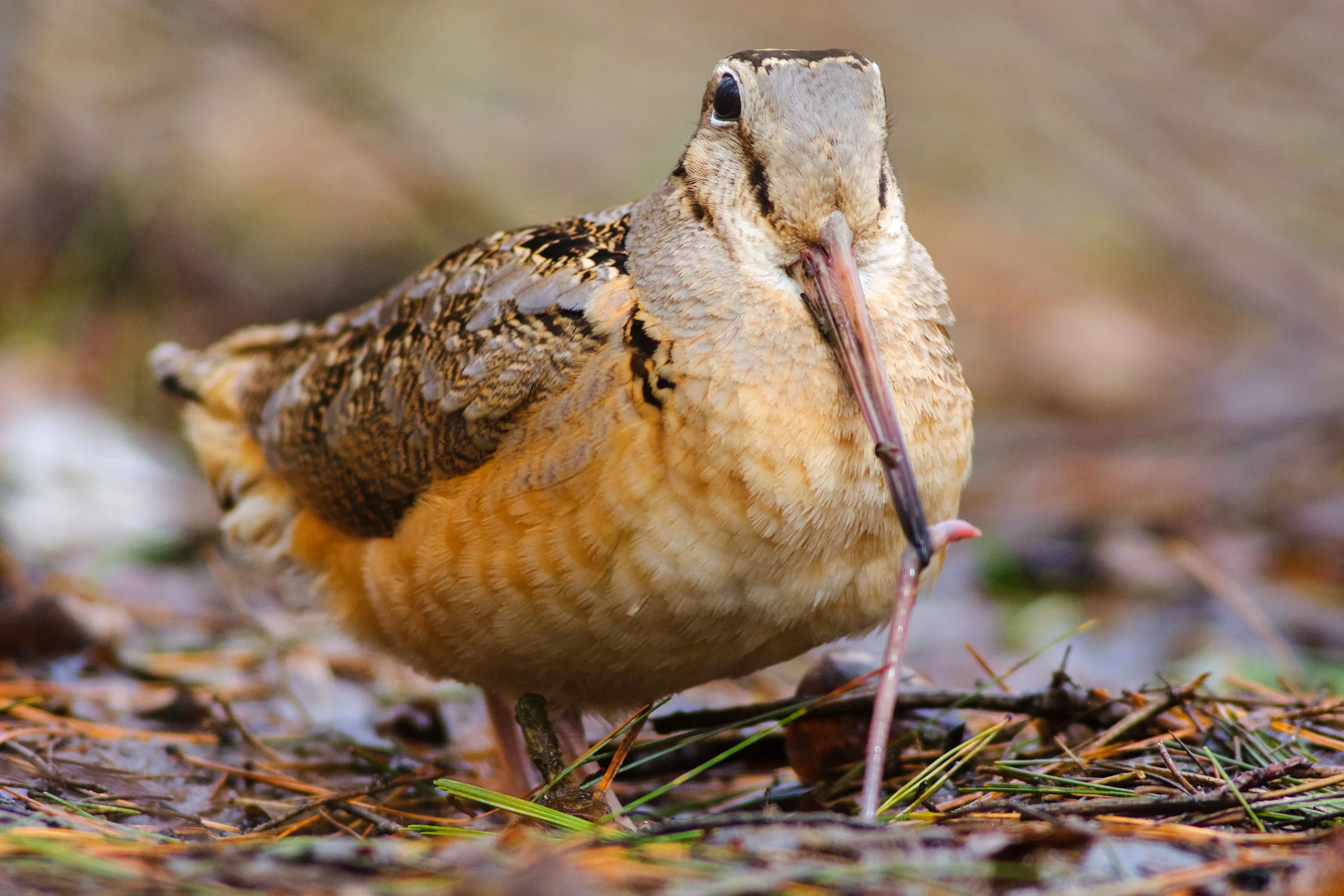
In addition to young forests, the woodcock’s preference for shrubby cover further highlights its habitat adaptability. They are frequently found in low-to-medium density shrubby thickets, old fields, and overgrown pastures. These environments provide optimal conditions for both roosting and nesting. As a result, it is important to recognize the interconnected nature of the woodcock’s habitat, wherein diverse environments contribute to its overall ecological needs.
Habitat Features Summary:
| Feature | Description |
|---|---|
| Young Forests | Comprised of deciduous tree species |
| Moist Soils | Rich, damp environments |
| Shrubby Cover | Dense thickets and overgrown pastures |
| Open Areas for Display | Clearings for aerial displays |
Through comprehensive habitat analysis, it becomes evident that maintaining and managing these diverse environments is crucial for the American Woodcock’s continued prosperity. Ongoing conservation efforts seek to preserve these habitats, ensuring that the woodcock population remains stable as it adapts to changing environmental conditions.
Preferred Environments
The American Woodcock demonstrates notable preferences for certain environments within its range, directly influencing its behavior, feeding habits, and breeding success. Understanding these preferred environments allows ornithologists and birdwatchers to anticipate the presence of woodcocks while also highlighting the specific ecological needs that underpin their population trends.
- Young Forests: As wrens are fond of thick brush, the American Woodcock prefers early successional forests abundant in deciduous trees such as quaking aspen, white birch, and maple. These habitats afford dense cover for both foraging and nesting, creating a dynamic ecosystem essential for this species’ survival.
- Moist Soils: The woodcock enjoys moist and rich soils crucial for its feeding habits commonly located near wetland fringes or low-lying areas. These regions provide fertile ground for the earthworms and other invertebrates, a primary food source that sustains the woodcock’s nourishing diet.
- Shrubby Areas: In addition to young forests, woodcocks are found in areas dominated by low-to-medium density shrubs and thickets. Old fields and overgrown pastures offering this shrub cover are vital for roosting and nesting, giving woodcocks the shelter needed to evade predators.
- Open Areas for Display: During mating season, males perform their captivating aerial displays or “sky dances” in open clearings or fields. These spaces are critical for males to establish territories and attract females, with recommendations indicating a minimum area of one acre devoid of tall growth for optimal functioning during courtship.
- Diverse Forest Types: Geographic variations influence habitat preferences; in the Northeast, woodcocks might be found in mixed forests featuring hawthorn, while in the Midwest, they lean towards quaking aspen and white birch stands. Understanding these regional differences illuminates the woodcock’s adaptability and flexibility across varying landscapes.
- Habitat Fragmentation: Concentrations of woodcocks often reside in transitional zones between upland and wetland areas, as well as patches of old fields with shrubs. These mixed environments are essential, especially during migratory and breeding seasons, ensuring that woodcock populations sustain themselves.
Through the lens of its preferred environments, the American Woodcock stands as a symbol of ecological interconnectedness. The ongoing management and protection of these habitats are paramount, supporting not only the woodcock’s well-being but that of myriad species that share its environment.
Geographic Range
The geographic range of the American Woodcock (Scolopax minor) extends predominantly across the eastern United States and southeastern Canada, with a migratory pattern that takes it as far south as parts of the Caribbean during the winter months. This distinctive range illustrates the adaptability of the American Woodcock, allowing it to thrive in varied habitats while responding to seasonal changes.
During breeding season, the woodcock primarily inhabits wooded areas, notably young, shrubby deciduous forests and old fields. These locations not only provide essential cover for foraging and nesting but also cater to their unique courtship behaviors. The versatility of the woodcock’s habitats enables their populations to flourish across the eastern regions of North America.
As the seasons change, particularly in late fall, the woodcock embarks on its migratory journey, usually starting in November. Their wintering grounds often include southern states such as Texas and Louisiana, where they seek similar habitats that sustain their nutritional and ecological needs. The migratory patterns of adult woodcocks often differ from juveniles, with adults commencing their journeys earlier in the season a behavior aligned with their greater experience and maturity.
Through modern research initiatives, such as GPS tracking facilitated by the Eastern Woodcock Migration Research Cooperative, zoologists have gained valuable insights into woodcock migration strategies. This collaborative effort clarifies their routes and stopover sites, emphasizing the importance of maintaining habitat connectivity across regions.
Geographic Range Summary:
| Region | Characteristics |
|---|---|
| Northeastern U.S. | Breeding in shrubby deciduous forests |
| Southeastern Canada | Similar habitat preferences |
| Wintering areas | Southern states including Texas and Louisiana |
In conclusion, the American Woodcock demonstrates how geography interacts with environmental conditions to shape the life patterns of a bird species. By understanding their range and migration, conservationists can work to safeguard these critical habitats, ensuring the long-term survival of the woodcock.
Behavior
The American Woodcock’s behavior exemplifies the adaptability and resourcefulness of this charming bird species. When one observes the woodcock, it is easy to appreciate the dynamic interactions it engages in with its environment. From its distinctive feeding practices to its elaborate courtship displays, the woodcock embodies a unique blend of characteristics that emphasizes its place in the ecosystem.
The woodcock is particularly recognized for its elusive nature, often utilizing its camouflaged plumage to evade predators while foraging in soft, moist soil for earthworms and other invertebrates. Its unique probing technique, facilitated by its long bill, seems to merge artistry and skill as it extracts food from hidden crevices. This behavior draws parallels to a painter carefully crafting a masterpiece, as the bird navigates its surroundings with precision and intent.
During the breeding season, the male woodcock showcases a behavior known as the “sky dance,” which involves a series of captivating aerial displays accompanied by distinctive calls. The males perform these spectacular displays at dawn and dusk, creating a blend of sound and motion that’s both mesmerizing and instinctual. Their courtship behavior becomes an intriguing spectacle, as each male seeks to attract females while defending its territory, reminiscent of a grand performance where nature takes center stage.
Behavioral Characteristics:
- Feeding: Probing the soil with its long, flexible bill to extract earthworms and invertebrates.
- Courtship Display: The “sky dance” involving aerial flights and distinctive vocalizations is integral to attracting females.
- Camouflage: Exceptional plumage allows the bird to blend seamlessly into its surroundings, enhancing its foraging capabilities and evasion of predators.
The American Woodcock’s behavior encompasses a fascinating interplay of nature’s design elements, combining feeding strategies, mating displays, and survival tactics. These behaviors create a captivating narrative about the resilience of a species that thrives in complex environments.
Feeding Habits
The feeding habits of the American Woodcock are as specialized as they are fascinating, illustrating the bird’s adaptation to its surroundings. Primarily carnivorous, the woodcock’s diet consists mainly of invertebrates, with earthworms being among its most favored food sources. This reliance on burrowing creatures dictates its foraging behavior during various times of day, particularly at dusk and dawn when the earthworms emerge closer to the surface.
Using its unmistakably long and prehensile bill, the woodcock excels at probing moist soil to extract unwitting invertebrates. The bill’s flexibility allows it to open at the tip, enabling the woodcock to skillfully capture elusive prey. This technique exemplifies the woodcock’s unique design that stands in sharp contrast to other bird species that may rely on different foraging methods.
In addition to earthworms, the woodcock’s diet includes a variety of other culinary delights such as insect larvae, snails, centipedes, millipedes, spiders, beetles, and ants, presenting a veritable feast that showcases the diversity of its feeding habits. Although primarily a carnivore, the woodcock does consume small amounts of plant material, supplementing its diet with seeds and other organic matter.
Key Feeding Habit Characteristics:
| Food Item | Description |
|---|---|
| Earthworms | Primary food source |
| Insect Larvae | Commonly consumed |
| Snails | Adds variety to diet |
| Plant Material | Minimal, but occasionally eaten |
The feeding habits of the American Woodcock not only highlight its evolutionary adaptations but also play a vital role in its ecological niche. By understanding these feeding practices, conservationists can better assess the health of habitats supporting woodcock populations, ensuring that crucial elements within their ecosystems remain intact.
Courtship Display
The courtship display of the male American Woodcock is one of nature’s most mesmerizing performances, showcasing not only the unique behaviors of this species but also its role in maintaining population dynamics. As spring approaches, male woodcocks prepare to stake their claims and attract potential mates through their remarkable “sky dance.”
Beginning at twilight, the display entails a purposeful sequence. The male woodcock emits a loud, buzzy “peent” call that reverberates throughout its territory, announcing its presence to nearby females. This initial call serves as the catalyst for the impressive display that follows.
As the male lifts off from its chosen ground perch often referred to as a singing ground it spirals upward into the evening sky. Reaching heights of up to 300 feet, the bird produces a series of melodious chirps and a continuous twittering sound made as air rushes through its rapidly moving wings. This aerial ascent is nothing short of breathtaking, resembling the harmonious choreography of an avian ballet.
Upon ascending, the woodcock begins its descent, zigzagging back to the ground while continuing to vocalize, a visual and auditory spectacle that captivates anyone fortunate enough to witness it. If a female approaches, the male will gracefully land nearby and continue its display, emphasizing its fitness as a mate.
Courtship Characteristics Summary:
| Feature | Description |
|---|---|
| Initial Call | Loud, nasal “peent” |
| Flight | Spiraling ascent to heights of 300 feet |
| Descent | Zigzag pattern while chirping |
| Courtship Tray | Ground-based area for displays |
The sky dance represents an essential aspect of male woodcock behavior, contributing not only to individual fitness but also to population stability. Through these vibrant displays, woodcocks encapsulate the very essence of life competition, attraction, and the continuation of their species.
Nocturnal Activity
Nocturnal activity in the American Woodcock primarily revolves around its unique breeding behaviors and feeding habits. While woodcocks engage in most of their foraging during twilight hours, their courtship displays are particularly pronounced at dusk, creating an ethereal ambiance that characterizes their seasonal rituals.
In the spring, males take to the skies as twilight sets in. The soft glow of dusk acts as a backdrop for their ceremonial performances, where they showcase their impressive aerial displays, often inviting both intrigue and admiration from those fortunate enough to witness them. This is when the birds engage in their famed “sky dance,” executing a series of acrobatic flights and vocalizations that resonate throughout their territory.
The timing of these displays, coinciding with the last light of day, enables males to maximize visibility while simultaneously conserving energy. Additional to their aerial antics, woodcocks often forage for worms and invertebrates during these transitional periods, taking advantage of the cooler temperatures and damp soils that allow easier access to their primary food sources.
Beyond their foraging and courtship displays, nocturnal activity also includes vigilant behavior, as woodcocks demonstrate a heightened sense of alertness in the presence of potential threats. At night, their camouflaged plumage becomes a crucial asset, allowing them to blend into the underbrush and evade predators that may be active during these darker hours.
Key Nocturnal Behavior Highlights:
| Activity | Times of Day |
|---|---|
| Foraging | Dusk and dawn |
| Sky Dance | Primarily at twilight |
| Vigilance | Heightened during darkness |
The complex interplay between nocturnal activity and the behaviors of the American Woodcock unveils a narrative rich in life and adaptation. These birds dance amidst twilight, reminding us of nature’s subtleties and the moments that weave together the tapestry of life.
Breeding
The breeding season of the American Woodcock is a vibrant and critical time for these birds, characterized by unique courtship displays and nesting practices. Emerging early in the spring, male woodcocks initiate their breeding rituals, synchronizing their activities with environmental cues that reflect a changing landscape.
In mid-February to late April, males engage in aerial shows known as the “sky dance,” combining beautiful flight patterns with distinct calls to attract females. During this time, males defend specific singing grounds where they perform, showcasing their physical prowess and suitability as mates. The peak of mating activity typically occurs around mid-March, attracting numerous females to these territories.
Once mating occurs, females take on the pivotal responsibility of nesting. Typically choosing locations near the singing grounds, females construct simple nests on the forest floor. These nests consist of shallow scrapes lined with leaves, grass, and other natural materials that provide necessary camouflage to protect their eggs from predators. Clutches usually contain 4 to 5 olive-brown eggs that blend seamlessly with the leaf litter.
After an incubation period lasting around 20 to 22 days, the chicks hatch precociously, equipped with the instincts to forage for food shortly after birth. Nest-leaving occurs quickly, allowing the female to lead the young to foraging areas, emphasizing the importance of rapid development in survival.
Breeding Summary:
| Aspect | Description |
|---|---|
| Mating Season | Mid-February to mid-April |
| Nest Construction | Nesting near singing grounds |
| Egg Characteristics | 4-5 olive-brown eggs |
| Incubation Duration | 20-22 days |
The breeding season of the American Woodcock is intricately tied to the rhythms of nature, showcasing resilience and adaptation in the face of challenges. By comprehending this dynamic, individuals can appreciate the wonders of avian life and the natural world.
Mating Season
The mating season for the American Woodcock is a spectacular time filled with vibrant displays and intricate behaviors. It typically extends from mid-February to late April, with peak activity occurring around mid-March. As the days grow longer and warmer, the woodcock responds to seasonal cues, engaging in dynamic courtship rituals that make it a captivating subject for observation.
During this period, male woodcocks establish territories known as singing grounds, where they defend their areas from rival males. At dusk, they perform elaborate displays that begin with a dramatic “peent” call. This initial vocalization signals the start of their courtship and draws females to their designated territory. The males ascend into the sky in impressive spirals, achieving altitudes of up to 300 feet while producing a series of melodious chirps and twittering sounds unique to their descent.
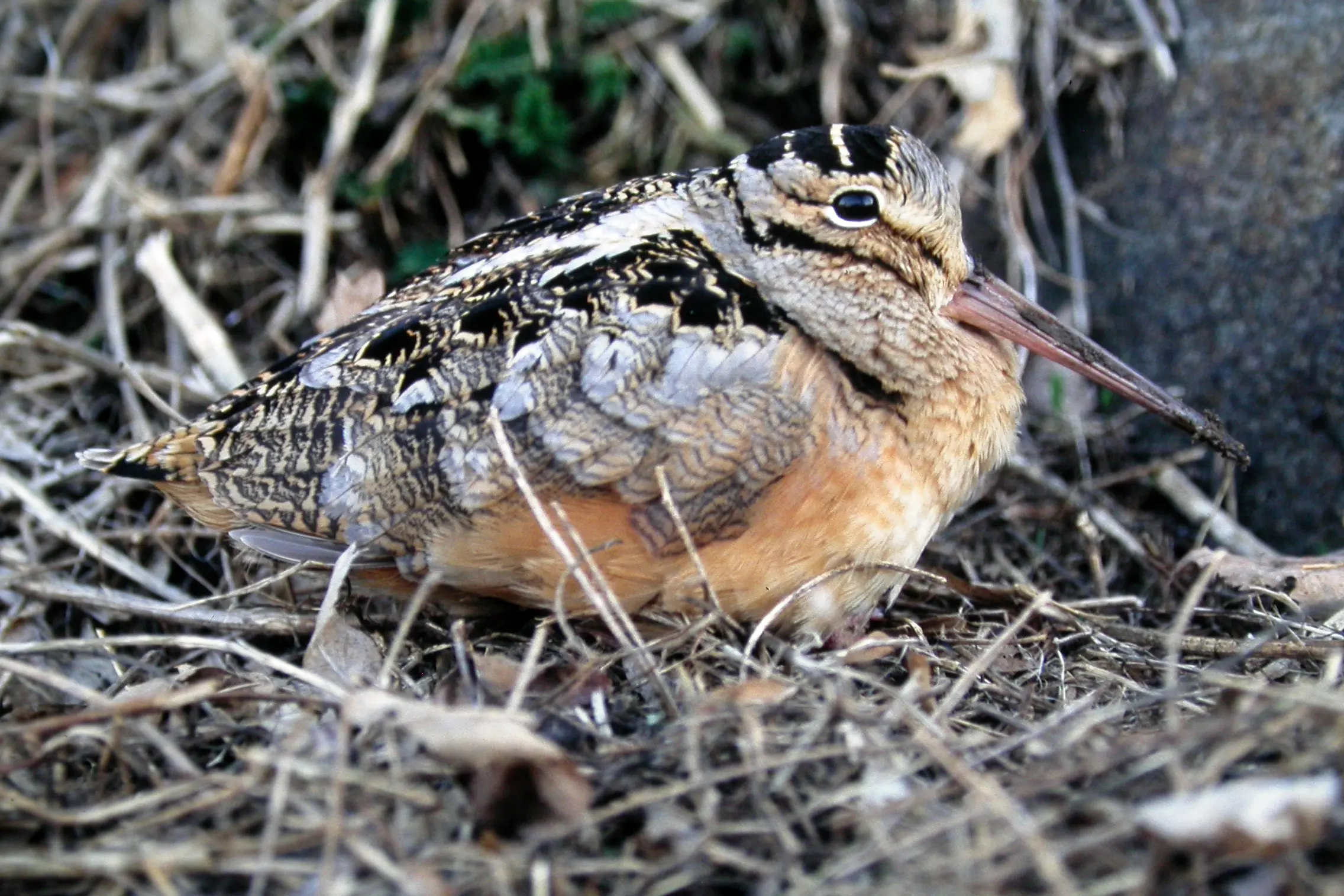
These displays serve not only to attract females but also to reinforce the male’s fitness and territoriality. Males may return to the same breeding grounds each year, relying on their established presence to lure potential mates. Simultaneously, their captivating behaviors create a remarkable spectacle that embodies the essence of nature’s cycles.
Upon successful mating, females build nests in nearby cover, primarily relying on the camouflage of natural materials to protect their eggs. Although the male provides no parental care following mating, his role in establishing a viable territory and attracting mates is crucial for the continuation of the species.
Mating Behavior Summary:
| Element | Description |
|---|---|
| Display Period | Mid-February to late April |
| Vocalizations | Loud “peent” calls |
| Flight Characteristics | Spiraling ascent to heights of 300 feet |
| Territory Defense | Males protect singing grounds |
The mating season highlights the remarkable courtship behaviors of the American Woodcock, illustrating how their instinctual rituals ensure survival while captivating observers with their majestic aerial performances.
Nesting Practices
Nesting practices of the American Woodcock are tailored to provide an optimal environment for raising young while highlighting the adaptations that ensure their survival in the wild. Upon mating, females select areas close to singing grounds locations frequented by males during their impressive courtship displays. This strategic selection fosters a connection between mating and nesting, allowing females to take advantage of available resources while maintaining proximity to their mates.
The nest itself is a simple construct characteristically a shallow depression in the ground that often measures no more than 5 inches across. The female lines this scrape with leaf litter, grass, and other organic materials, selecting items that blend into the surrounding environment. This natural camouflage is essential to evade potential predators that might threaten the eggs a tactic that showcases the woodcock’s instinctual adaptations.
Typically, woodcock nests contain 4 to 5 eggs, displaying a characteristic pale olive-brown coloration touched with blotches. This coloring serves to enhance their camouflage against the rich ground litter in their habitats. Once laid, the female takes on the responsibility of incubating the eggs, a task that lasts roughly 20 to 22 days. During this time, she remains vigilant and protective of the site, often relying on her excellent camouflage to remain unnoticed.
Upon hatching, the precocial chicks quickly leave the nest within hours, demonstrating remarkable agility as they follow their mother to forage for food. This rapid movement highlights the importance of the nesting practices, designed to ensure the young’s survival.
Nesting Summary:
| Aspect | Description |
|---|---|
| Nest Location | Near singing grounds |
| Nest Characteristics | Shallow scrapes lined with leaves |
| Egg Characteristics | 4-5 olive-brown eggs |
| Incubation Duration | 20-22 days |
Nesting practices of the American Woodcock embody an intricate understanding of ecological balance and survival. By choosing their nesting locations and constructing effectively camouflaged nests, woodcocks optimize their chances of raising healthy offspring and contributing to population stability.
Incubation and Chick Development
The incubation and chick development of the American Woodcock (Scolopax minor) are remarkable processes that emphasize the bird’s unique reproductive strategy. Breeding typically occurs in the spring, as males engage in captivating aerial displays to attract females. After successful mating, the female constructs a shallow nest in favorable habitats, ensuring it is closely situated to singing grounds where courtship took place.
The nesting process involves laying a clutch of approximately 4 to 5 eggs, which are distinctively marked with brown and gray blotches for camouflage. The female incubates the eggs alone for approximately 20 to 22 days, making her the sole caretaker during this critical period. During incubation, the mother exhibits diligent behavior, frequently covering the eggs and maintaining their temperature.
Upon hatching, the chicks reveal their precocial nature a characteristic feature among woodcocks. Unlike altricial birds that rely heavily on parental care in their early days, woodcock chicks are relatively mobile and capable of foraging for food shortly after leaving the nest. This early independence is essential for survival, as it enables them to adapt quickly to their environment while evading potential predators.
During the initial weeks after hatching, the mother remains vigilant, guiding the chicks to foraging areas where they can acquire insects and earthworms essential components of their diet. It becomes evident that the nurturing role of the female is crucial during this time, as she provides the young with not only protection but also essential nourishment.
Chick Development Summary:
| Aspect | Description |
|---|---|
| Incubation Duration | 20-22 days |
| Chicks’ Nature | Precocial (mobile shortly after hatching) |
| Feeding | Mother guides young to foraging areas |
| Diet | Insects and earthworms |
The incubation and chick development process shapes a critical chapter in the life of the American Woodcock, showcasing resilience and adaptability in the face of environmental challenges. This phase highlights the significance of understanding these patterns for effective management and conservation efforts.
Migration
Migration is a vital aspect of the American Woodcock’s life cycle, facilitating seasonal movements between breeding and wintering grounds. These migratory behaviors illuminate the adaptations that have evolved within the species over time, as they navigate varying environmental conditions to ensure their survival.
Typically, the autumn migration occurs in early November, with most woodcocks departing their northern breeding ranges to seek more temperate environments. Observations reveal that juvenile female woodcocks often commence their migrations later than their adult counterparts, suggesting an age-related stratification that governs migration timings. During this time, the birds rely on instinctual patterns, moving toward suitable habitats that provide the necessary resources.
In spring, the woodcock returns to its northern breeding grounds approximately three months after departing. This transition is often influenced by changes in daylight hours and environmental conditions, signaling the appropriate time to return for nesting and courtship. Interestingly, it takes longer for the woodcock to migrate back north averaging about 53 days compared to the 31 days typically taken during the fall migration.
As they navigate their migratory paths, woodcocks undertake numerous stopovers along the way. Each individual may make between four to six stops, accumulating days of rest and forage opportunities. These strategic halts are critical, allowing the birds to assess local environmental conditions conducive to migration and prepare adequately for the challenges ahead.
Migration Details Summary:
| Feature | Description |
|---|---|
| Autumn Migration | Early November |
| Spring Migration | Return to northern breeding areas |
| Duration | 31 days (autumn) vs. 53 days (spring) |
| Stopovers | 4-6 stops en route |
Through an understanding of the American Woodcock’s migratory patterns, ornithologists and conservationists are better equipped to conserve critical habitats necessary for their successful journeys. This migrating species has much to teach us about adaptability and resilience in the face of a changing world.
Migration Patterns
American Woodcock migration patterns exhibit fascinating dynamics that dictate their seasonal journeys. These birds, characterized by their short, stocky frames and agile flight, are adept navigators, undertaking significant movements between their breeding and wintering grounds.
- Autumn Migration: Typically, woodcocks begin their migration in early November, with a mean departure date around November 3. Juvenile female woodcocks tend to start their migration later than adult females, highlighting a distinction in migratory behavior based on age and maturity. During this fall migration, woodcocks often engage in a series of stopovers, averaging between 3.9 and 4.4 days. Notably, these stopovers can accumulate as many as 13 potential stopping points throughout individual journeys.
- Spring Migration: The spring migration occurs approximately three and a half months after the autumn departure, prompted by increasing day lengths that signal the approach of the breeding season. Research indicates that spring migration tends to be longer, averaging around 53 days, in contrast to the relatively expedient autumn migration. The prolonged nature of this journey allows woodcocks to closely examine local environmental conditions at each stop, optimizing their timing for successful breeding upon arrival.
Migration Insights Summary:
| Season | Average Duration | Key Notes |
|---|---|---|
| Autumn Migration | Approximately 31 days | Engage in multiple stops |
| Spring Migration | Approximately 53 days | Reflects environmental assessments |
The migration patterns of American Woodcock are shaped by intricate environmental interactions, necessitating strategic behavior throughout their journeys. Understanding these migratory habits illuminates the woodcock’s unique lifestyle and accentuates the need for ongoing conservation efforts to secure habitats critical during these pivotal seasonal movements.
Seasonal Presence in Different Regions
The seasonal presence of American Woodcock varies significantly across regions, underscoring the adaptability of this species to distinct environmental conditions. Understanding the regional fluctuations in woodcock populations provides valuable insights into their migratory patterns, breeding behaviors, and habitat preferences.
- Northern Regions: During the breeding season from late February to late April, woodcocks predominantly occupy regions in the northeastern and midwestern United States, particularly in young deciduous forests and shrubby fields. Here, their vibrant courtship displays and nesting activities unfold, marking a crucial time for the species.
- Southern Regions: In the fall, woodcocks migrate southward to wintering grounds that encompass southern states, such as Texas and Louisiana. These regions often provide similar habitat characteristics moist soils and dense cover facilitating their survival and foraging success during the colder months.
- Geographic Variations: Specific habitat preferences can differ between breeding populations in the Northeast, Midwest, and Southeast, as woodcocks adapt their behaviors to the nuances of local environments. In some areas, populations may tend to gather in suitable habitats with ample cover, while other regions may experience more scattered distributions.
- Changes in Migration Timing: It is essential to note that migration timing can vary based on subpopulations, which may only partially overlap in distribution. Environmental factors such as temperature and food availability play central roles in dictating these migratory movements.
Seasonal Presence Summary:
| Region | Seasonal Notes |
|---|---|
| Northern Regions | Breeding from late February to April |
| Southern Regions | Wintering in states like Texas and Louisiana |
| Geographic Variations | Adaptations based on local ecology |
American Woodcock exemplifies the intricate relationship between geography and seasonal behaviors. This adaptability is crucial for their survival, amplifying the importance of conservation initiatives that support diverse habitats along their migratory routes.
Conservation
Conservation efforts surrounding the American Woodcock (Scolopax minor) are increasingly critical, particularly given the observed population declines attributed to habitat loss and environmental changes. The U.S. Fish and Wildlife Service (FWS) recognizes the urgency of addressing these challenges, aiming to stabilize and restore woodcock populations to levels observed in the early 1970s.
Population monitoring plays a vital role in conservation strategies. Several surveys, such as the Singing-ground Survey (SGS), assess male woodcock abundance during the breeding season, providing insight into population trends. Over the years, results from the SGS have revealed a concerning decline of approximately 0.9% per year in North America between 1968 and 2006. Such findings underscore the importance of targeted conservation actions.
In addition to understanding population dynamics, hunting regulations and harvest data present essential components of conservation management. The Harvest Information Program (HIP) reveals harvest estimates, catching insights into the impact of hunting on woodcock populations. For instance, during the 2021-22 hunting season, roughly 141,300 woodcock were harvested in the Central Region. These numbers highlight the significance of sustainable hunting practices in maintaining healthy populations.
Conservation Management Summary:
| Aspect | Details |
|---|---|
| Population Monitoring | Singing-ground Survey (SGS) |
| Decline Rate | 0.9% per year (1968-2006) |
| Harvest Estimates | Roughly 141,300 harvested (2021-22 season) |
The evolution of conservation efforts emphasizes habitat management alongside monitoring and regulation. The American Woodcock flourishes in young forest habitats with dense underbrush, illustrating the necessity of preserving these critical ecosystems to uphold their population stability. The ongoing collaboration between wildlife managers and conservationists is vital in the quest to reverse negative trends and ensure the longevity of this iconic species across North America.
Population Trends
Population trends of the American Woodcock reflect the increasing need for attention to conservation efforts dedicated to this species. The U.S. Fish and Wildlife Service (FWS) has identified alarming declines in woodcock populations attributed mainly to habitat loss, environmental changes, and adaptation challenges.
Ongoing surveys, such as the Singing-ground Survey (SGS), have established critical data points towards evolving population dynamics. Between 1968 and 2006, woodcock populations in North America experienced an approximate 0.9% decline per year, highlighting long-term concerns that necessitate immediate intervention and management strategies.
The analysis of hunting and harvest data from the Harvest Information Program (HIP) certain years has further elucidated the relationship between hunting practices and population viability. For example, during the 2021–22 hunting season, an estimated 141,300 woodcock were harvested in the Central Region alone a number that emphasizes the need for sustainable hunting regulations to prevent further population losses.
Population Trends Summary:
| Survey | Year Range | Findings |
|---|---|---|
| Singing-ground Survey (SGS) | 1968-2006 | Population decline of 0.9% per year |
| Harvest Information Program (HIP) | 2021-22 season | Approx. 141,300 harvested in Central Region |
Given these trends, proactive measures are essential for ensuring the stability and success of the American Woodcock’s populations. Engaging in habitat management, monitoring efforts, and sustainable hunting practices collectively represent a comprehensive approach towards understanding and preserving this iconic species in the long term.
Threats to Habitat
The American Woodcock (Scolopax minor) faces significant threats to its habitat, creating challenges for its survival in the face of ongoing environmental changes. These threats primarily stem from habitat loss, degradation, and environmental practices that interfere with the woodcock’s preferred ecosystems.
Habitat loss is a crucial concern, as urban expansion and agricultural development increasingly encroach on natural environments. The transformation of forests into urban areas and agricultural lands has drastically reduced the availability of critical habitats. Young forest habitats essential for breeding and foraging are disappearing, particularly in the northeastern United States, where substantial areas have reverted to uses detrimental to woodcock populations.
In addition to direct habitat loss, other environmental changes, including climate change, pose considerable threats. As temperature and weather patterns shift, woodcock migratory and breeding behaviors might be disrupted, altering resource availability. Unpredictable weather events, like storms, can exacerbate these pressures, increasing mortality risks during migration due to collisions with anthropogenic structures and changes in habitat distribution.
The necessity of high-quality habitat structure is underscored by ongoing research into woodcock populations. Studies reveal that woodcocks residing in fragmented habitats exhibit lower survival rates compared to those in more contiguous, high-quality environments. This suggests that maintaining habitat integrity is essential not only for breeding success but also for population resilience.
Threats to Habitat Summary:
| Threat | Description |
|---|---|
| Habitat Loss | Urbanization and agricultural expansion |
| Climate Change | Altered migration patterns and food resource availability |
| Fragmentation | Reduced survival rates in fragmented habitats |
The threats to the American Woodcock’s habitat depict a broader narrative concerning ecological preservation. To ensure the longevity of this species, comprehensive actions addressing habitat loss and transforming land use practices must be prioritized across fragmented landscapes.
Conservation Efforts
Conservation efforts targeting the American Woodcock (Scolopax minor) involve a multifaceted approach aimed at protecting vital habitats, ensuring sustainable hunting practices, and enhancing population management strategies. Collaborative initiatives by organizations and conservationists emphasize the urgency of reversing declining trends and providing a sustainable future for this iconic bird species.
Habitat management is at the cornerstone of successful conservation strategies. The U.S. Fish and Wildlife Service, along with various conservation organizations, focuses on restoring and maintaining young forest habitats, ensuring woodcock populations have access to optimal environments for breeding and foraging. Such management plans involve creating and maintaining areas that support early successional growth that is critical for the woodcock and many other wildlife species.
Public awareness initiatives are equally significant in fostering support for conservation efforts. Raising awareness about the ecological needs and challenges faced by woodcocks helps shape public understanding and advocacy for policies that protect these habitats. Education campaigns can engage communities, emphasizing the importance of the woodcock’s ecological roles and contributions to the broader environment.
Research and data collection efforts also support effective conservation management. Conservation organizations have conducted extensive research, including banding and satellite tracking studies, to gather valuable data on woodcock migration patterns and habitat use. This scientific information aids in informing future conservation initiatives, enhancing habitat management, and illuminating the needs for maintaining sustainable environments.
Conservation Efforts Summary:
| Effort | Description |
|---|---|
| Habitat Management | Restoring young forest habitats |
| Public Awareness | Educating communities about ecological needs |
| Research and Data Collection | Conducting tracking studies on migration patterns |
Ultimately, conservation efforts for the American Woodcock require a collaborative and comprehensive strategy that addresses habitat preservation, public awareness, and ongoing research. These actions collectively contribute to fostering a sustainable environment for the woodcock while ensuring its critical ecological roles remain intact, all while serving as a reminder of the intertwined nature of wildlife and human activities.
Cultural Significance
The American Woodcock (Scolopax minor) possesses cultural significance that transcends its ecological value; it evokes a relationship between local traditions, outdoor activities, and the appreciation of nature. Commonly referred to as “timberdoodle,” “bog sucker,” and “night partridge,” these nicknames underscore the bird’s role in various cultural narratives and highlight how local ecosystems influence language and naming practices.
For many regions in North America, the woodcock has become emblematic of outdoor pursuits, especially hunting. Respected for its unique behaviors and delightful courtship displays, this migratory bird has captivated the hearts of hunters and birdwatchers alike. The “sky dance” performed by males during breeding season is not only an avian spectacle but also fosters a sense of connectedness among those who appreciate its beauty and tenacity.
Through the writings of ornithologists and naturalists, including the famed John Audubon, the cultural narrative around the American Woodcock has been preserved. Audubon’s observations detailed the importance of this species and its interactions with local communities, particularly among Indigenous peoples who recognized its significance in folklore and tradition.
Additionally, the woodcock symbolizes a broader reflection on our relationships with nature and the delicate balance of ecosystems. As hunting traditions evolve, the need to preserve and conserve species like the woodcock prompts discussions on environmental stewardship. Communities that celebrate this bird’s cultural presence engage in crucial dialogues surrounding wildlife management and ecological balance.
Cultural Significance Summary:
| Name | Description |
|---|---|
| Timberdoodle | Common nickname reflecting local usage |
| Bog Sucker | Metaphor illustrating habitat behaviors |
| Night Partridge | Cultural significance in folklore |
The cultural significance of the American Woodcock illustrates the intricate connections between wildlife and human experiences. As we explore these relationships, the woodcock serves as a poignant reminder of the beauty of nature and the responsibility we have to protect our shared environment.
Common Names
The American Woodcock (Scolopax minor) is known by various common names that reflect its unique behaviors, habitats, and cultural significance across different regions. These names often illustrate how local communities have engaged with this species, infusing it with a rich tapestry of meaning and folklore that resonates through time.
- Timberdoodle: This playful moniker is rooted in the bird’s habitat preferences, emphasizing its association with wooded areas. The name evokes images of the woodcock’s quirky movements and foraging behaviors, capturing the essence of its character.
- Bog Sucker: Reflective of the woodcock’s feeding habits, this name highlights its propensity to probe the moist earth in search of invertebrates such as earthworms. This evocative term conveys the bird’s role in the ecosystems of wetland areas where it can often be found.
- Labrador Twister: Likely derived from the woodcock’s captivating aerial displays during courtship, this name underscores the impressive “sky dance” that males perform to attract females, adding a sense of wonder and admiration to its identity.
- Night Partridge: This name highlights the cultural significance of the woodcock as a game bird, drawing parallels with partridge species while hinting at its elusive nature, especially during the twilight hours when it is most active.
Through these common names, the American Woodcock encapsulates the rich connection between people and nature. These colloquial labels serve to forge deeper relationships with wildlife, inspiring appreciation for the ecological and cultural narratives surrounding this captivating bird.
Historical Context
The American Woodcock (Scolopax minor) possesses a historical context steeped in human connection, hunting traditions, and ecological significance. Acknowledging this context fosters a deeper understanding of the bird’s role within North America’s natural and cultural heritage, highlighting its evolution through centuries of anthropogenic influence.
Historically, American Woodcock have been revered as esteemed game birds among hunting communities. Their unique behaviors especially the elaborate courtship displays captivated naturalists and hunters alike, leading to the evolution of hunting techniques tailored to their lifestyles. They have held a special place in outdoor activities, emphasizing the interwoven relationship between human pursuits and wildlife conservation.
During the mid-twentieth century, awareness of wildlife preservation began to grow, and the American Woodcock was highlighted in various discussions regarding habitat management and ecological integrity. Notable conservationists, such as Aldo Leopold, used their writings to reflect on the beauty of these birds and the ecological implications of hunting practices.
Moreover, Indigenous peoples historically recognized the significance of the woodcock, often incorporating this species into local lore and customs. Accounts of woodcock sightings, behaviors, and seasonal migrations were passed down through generations, showcasing the deep-rooted connections between culture, ecology, and community life.
Historical Context Summary:
| Aspect | Description |
|---|---|
| Game Bird Status | Esteemed among hunters |
| Conservation Awareness | Growth during mid-20th century |
| Indigenous Recognition | Integral to local customs and lore |
The historical context of the American Woodcock emphasizes its multifaceted significance, intertwining ecological and human narratives. Understanding this intricate history serves to reinforce the value of conservation efforts, ensuring that future generations continue to appreciate this remarkable species amid the evolving landscapes of North America.
Observing American Woodcocks
Observing American Woodcocks (Scolopax minor) offers a unique opportunity to engage with the avian world, as these captivating birds often embody the enchantment of both their habitats and behaviors. Birdwatchers and nature enthusiasts often find themselves drawn to the American Woodcock for its visual charm and distinct courtship displays.
- Best Time and Places: The best times for observing woodcocks correlate with dusk and dawn, particularly during the spring mating season when males are most active in their displays. Locations such as young forests, shrubby fields, and areas with suitable soil for feeding lend themselves particularly well to sightings. Notable sites in Massachusetts, Rhode Island, and other parts of the northeastern U.S. serve as hotspots for birdwatchers seeking to witness these intriguing birds.
- Listening for Calls: One of the keys to locating the American Woodcock rests in its vocalizations. The male woodcock’s unique nasal “peent” call acts as the initial invitation before flying into aerial displays. Patience and attentive listening are essential, as the woodcock may be hidden from sight yet very vocal.
- Cloaked Behavior: Watching out for their characteristic rocking and probing behavior is equally important. Much like a burrowing creature of the earth, the woodcock’s method of searching for food can signal its presence and grant birdwatchers the chance to observe this fascinating behavior up close.
Through careful planning and attention to detail, birdwatchers can experience the thrill of observing the American Woodcock in its natural habitat, creating lifelong memories and deepening connections with the avian world.
Best Locations for Birdwatching
Engaging in birdwatching allows fans of the American Woodcock (Scolopax minor) to discover exceptional locations where these birds can be observed during their active seasons. The following locations provide prime habitats suitable for spotting the woodcock and witnessing its captivating behaviors.
- Millennium Park, West Roxbury, MA: Formerly a landfill, this park has transformed into a thriving birding site. Look for woodcocks along the northwest and southwest edges, particularly near the canoe launch area, where they forage for invertebrates.
- Franklin Park, Boston, MA: Known for the rich diversity of wildlife, Franklin Park presents an ideal location for birders to spot woodcocks during their displaying season, especially around the critical twilight hours.
- Nature Refuges in Rhode Island: Areas such as Audubon’s Parker Woodland, Newman, and Caratunk Wildlife Refuges are prime spots for finding woodcocks. Visitors can often see woodcocks showcasing their aerial displays from March through May, highlighting the importance of these protected habitats.
- Additional Notable Areas: Woodcocks can also be seen in various habitats across eastern North America. Open fields interspersed with shrubby areas provide the necessary combination of foraging opportunities and protective cover.
By visiting these recommended locations, birdwatchers can enhance their opportunities to spot this elusive bird while enjoying the rich beauty of nature.
Tips for Sightings
Observing the American Woodcock (Scolopax minor) requires patience and keen observation skills, but the rewards of witnessing these captivating birds in their natural habitat are well worth the effort. Here are key tips for maximizing your chances of sighting woodcocks:
- Time of Day: Schedule your birdwatching outings for the best times to see American Woodcocks dawn and dusk, especially during their courtship displays in spring. The early morning and late evening periods provide the perfect backdrop for locating these birds as they engage in their captivating behaviors.
- Listen for Calls: Pay attention to the males’ distinctive nasal “peent” calls; listening can often guide you to their location before visibility is optimal. The call acts as both a territorial marker and an invitation to nearby females.
- Watch for Display Flights: Male woodcocks perform their renowned “sky dance” during the courting season, characterized by acrobatic ascent and melodic calls. Observers should keep an eye on open spaces near suitable habitats to catch a glimpse of this breathtaking display.
- Patience and Stealth: Approach potential woodcock habitats quietly and remain still once you are in position. Woodcocks have excellent camouflage, so patience is essential for success. Take your time to let the environment unfold, allowing for these elusive birds to reveal themselves.
- Look for Feeding Behavior: The unique rocking motion of the woodcock while probing into the soil for earthworms is a distinct behavior worth waiting for. As you scan the surroundings for movement, look for this characteristic pattern as a sign of their presence.
By incorporating these strategies into your birdwatching experience, you can increase your chances of encountering the fascinating American Woodcock. Each sighting serves as a reminder of the enduring connection between humans and the natural world.
In conclusion, the American Woodcock serves as a remarkable example of adaptability in nature, illustrating the complexities of avian life within diverse ecosystems across North America. As we delve deeper into its physical characteristics, behavior, breeding, conservation status, and cultural significance, we also find ourselves weaving a narrative that celebrates the interconnectedness of life on Earth.
From its distinct plumage and behaviors to its vital role in the ecosystem, the American Woodcock exemplifies the rich tapestry of life that ecological communities offer. As observers and conservationists, it is essential to understand and appreciate the nuances of the American Woodcock’s existence, committing to efforts that ensure its continued presence for future generations to appreciate. Through continued research, conservation strategies, and public engagement, we foster a harmonious relationship with the natural world, safeguarding an unforgettable aspect of North America’s rich avifauna.
This mutual reverence for wildlife serves to enhance our connection to the world around us and draws attention to the pressing need for ecological preservation in a rapidly changing environment. Ultimately, the American Woodcock represents the beauty of our natural heritage and calls us to engage as stewards of the earth for its health and longevity.

